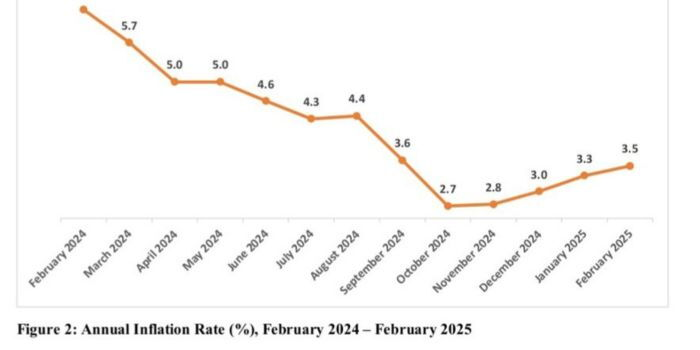The Kenya National Bureau of Statistics (KNBS) has reported an increase in the prices of several essential commodities between January and February.
In its monthly survey released on Friday, February 28, KNBS highlighted that the cost of cooking oil, sugar, tomatoes, onions, kale, milk, beef, local flights, miraa, and mutton had gone up over the past month.
According to the report, sugar prices saw the highest increase at three point two percent, followed by cooking oil at one point six percent and tomatoes at one point three percent. Additionally, the cost of onions and kale rose by one percent and zero point five percent, respectively.
The survey also recorded price hikes in milk (zero point three percent), beef (zero point two percent), and local flights (four point eight percent). Miraa and mutton prices rose by four point five percent and zero point two percent, respectively.
As a result of these increases, the inflation rate climbed from three point three percent in January to three point five percent in February.
“Overall year-on-year inflation rate as measured by the Consumer Price Index (CPI) was three point five percent in February 2025, an increase from the three point three percent recorded in January 2025,” KNBS stated in its report.
The bureau attributed the inflation rise to higher costs in various consumer categories under the Classification of Individual Consumption by Purpose (COICOP).
Commodities That Recorded Price Drops
While some goods became more expensive, KNBS noted that the prices of six key items declined during the same period. These included beans, maize flour, cabbage, potatoes, wheat flour, and electricity.
The report detailed that beans, maize flour, and cabbage saw price drops of zero point five percent, zero point eight percent, and one point eight percent, respectively. Similarly, the prices of potatoes and wheat flour fell by one point eight percent and two point four percent, while the cost of two hundred watts of electricity decreased by one point two percent.

Photo
KNBS
Survey Methodology
The monthly Consumer Price Index (CPI) survey involves collecting retail prices from selected outlets in fifty data collection zones across the country. Nairobi County has fourteen of these zones, covering lower, middle, and upper-income areas, while the remaining thirty-six are spread across other urban centers.
The data collection process takes place during the second and third weeks of each month, ensuring that price trends are accurately reflected in inflation calculations.
KNBS continues to monitor price fluctuations as part of efforts to track the economic landscape and provide insights into cost-of-living changes.







